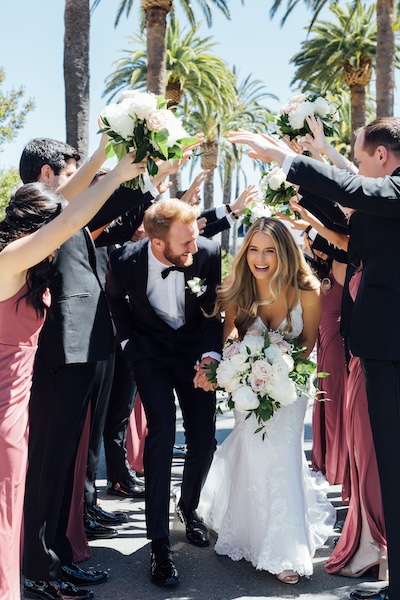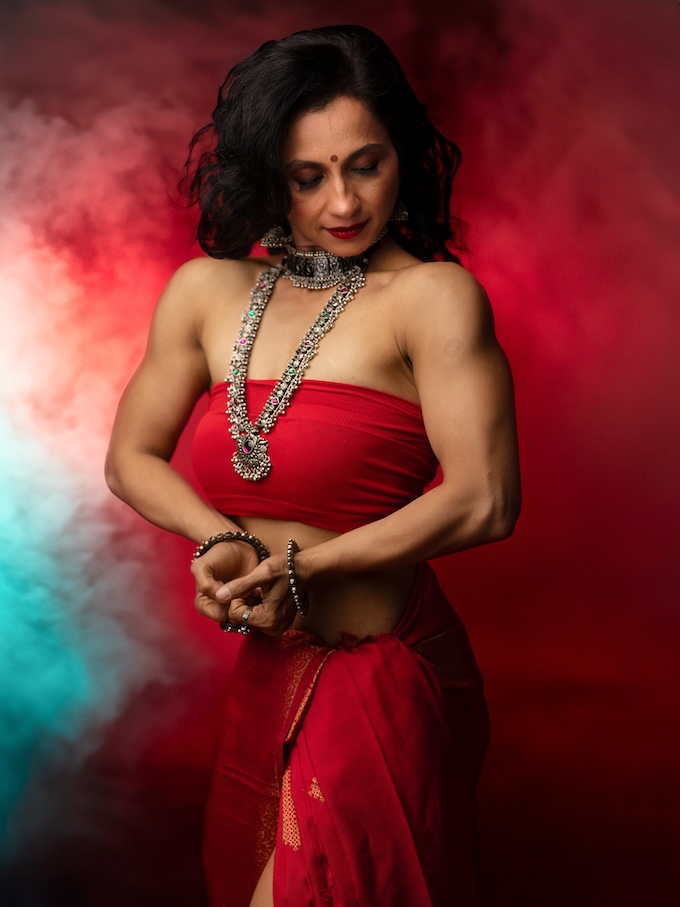Business + Marketing
When Heath Ledger’s Oscar-winning portrayal of the Joker broke ground as one of the most radical performances in recent memory, you’d probably be forgiven for not believing that one of The Dark Knight writers, Jonathan Nolan, was, like the production studio and most of the population, in vocal opposition to the casting choice. Ledger defied critics in the loudest way, broke any subtle typecasts he had and built himself into a Joker that dismantled what it meant to revive an established character.
This is what’s revealed when you test the edges of who you think you are, or are told you are, and lean away from one of the most popular pieces of recycled advice: “Just be yourself.”
We’re in a narrative-driven culture competing for ideology air-time, and we’ve never been bombarded with so many different ones at such frequency and so forcefully. It’s “be yourself” one minute and “always step outside of your comfort zone” the next, with a scarcity of roadmaps available to navigate how and when to switch on each of those oppositional states. A convincing counter can be found for just about any mantra out there at the moment, and mentally sifting through competing narratives is nearly a full-time job in itself.
One of the most charged narratives out there right now for creative professionals and freelancers is around the intersection of our identity and our craft. Identity, and therefore artistic voice, is often presented as that fixed construct and something that should be reflected in all parts of our work. But aligning ourselves with this narrative does two things that can potentially cause us grief: It makes the assumption that we’ve taken proper stock of ourselves and know “who we are,” and it can create unnecessary tension around the idea of being truthful to that identity in our work and telling truth in our images.
“Who I am” is a construct built by everyone I’ve ever had around me and every story I’ve ever told myself, about myself. And now, this construct is supported by every digital touch-point in our lives. Without sounding like an apocalyptic defeatist, online social platforms are exactly engineered to create more confirmation bias and solidify your already-presented identity. Through a system of carefully engineered notifications and filtering, they bind us to this presented identity with a high rate of frequency. This has a profound subconscious effect on how we go about living in the small-business world and producing the work that we do.
The candid photography and authenticity movement that is driving the story heavily on social media currently is less an objectively good way of going about doing things and more of a response to our perception of photography in the ‘90s. Whether we like it or not, we all leave our own, new mark on the historical proof we’re creating somehow, and it’s near impossible to get an idea of how that will hold up in 30 years. This is an ambiguously freeing thing, and while we should celebrate that as makers, we should also do it with the context that this isn’t better. It’s just different.
Before, during and for a long time after the Industrial Revolution, we didn’t really consider concepts of our work and self being too intertwined. We got the damn work done because we had no other choice. We had to support our family. Thankfully, the general employment climate and standard of living is better, which affords us more choice, but an abundance of that choice has presented its own set of challenges. In this case, it’s the challenge of excess and that identity magnifying glass we’re placing on ourselves because we now have the time and space to do so.
In a world where you can do anything and be anything, we’re now told to be authentic, to wind things back to what’s real and truthful. And this is particularly potent in photography, where we’re tasked with keeping historical record of real things happening in front of us.
However, authenticity and truth don’t exist—not in the way they’re sold to us, anyway—and perhaps the pursuit of those things isn’t the most useful way of finding our curiosity. When the broader online think-tank promotes a thin, arbitrary idea of authenticity, it all starts bearing a striking level of similarity. We see this most obviously in how that authenticity is manifested into branding design, but that’s a conversation for another day.
So when engaging with the precious task of bringing out our voice into our work and brand, and being true to ourselves or our clients, in an industry heavily steeped in the idea that we have to “be” our work and live out binary authenticity through it, where does this leave us?
Various studies report that 70 to 80 percent of people lament not having their dream job, and a problem lies in the idea that we’re putting that dream job a yardstick ahead of a greater goal: exploration. Fundamentally, we are liquid, not stone—we just forget that as we go through school and the workplace, and find ourselves having to set a fixed identity relationship with everything around us, cemented with our job title stamped on paper.
You don’t have to “be” your work. Treat your business more like a pet piglet by your side. Walk it, feed it, let it roam. Give it a hot bath occasionally. Feed it a strawberry (no, seriously, Google “piglets eating strawberries”). Most importantly, be open to the idea that it can have an identity of its own. You can treat it like a game while still serving people in a beautiful way. That does not have to be a state of conflict for you.
I never hide the fact that I wouldn’t book myself, or anyone like me, for my wedding. This isn’t to say I don’t believe in the work that I do; I’m deeply engaged with my way of producing images and finding couples who like it. I’m surrounded by lush imagery, intimacy and end-to-end storytelling. But me? I don’t want that for myself.
I’d hire a gritty, jaded ‘90s photojournalist to photograph my wedding day on grainy film and a super wide lens. No prep, no portraits, no “storytelling.” I’m very present to the fact that our powerful imagination can fill in the gaps; I don’t need prescriptive images of every last micro-event doing the heavy lifting for me. There’s amplified value in scarcity, and that’s where my values lie for what I’d hire (subject to my wife’s input, of course). Does that make me inauthentic in the product I choose to sell?
There’s a lot of power locked up in words, and even though we’ve passed the madness of the loud hipster application of authenticity (I’ve waited patiently for six years for the fad to pass so that I could grow this damn man bun currently sitting post-pretentiously atop my middle-class noggin), we’re still in the middle of an ideological gold rush to show our B-side instead of our A-side, to move against heavy curation and to be “real” with what we post. But curated A-sides were never disinteresting or damaging—they just got hijacked by #influencers and advertisers. There’s nothing wrong with someone’s work or personal identity being shrouded in curated mystery, with all the rest left private, for them, like it used to be.
The next movement will be a middle ground and our ability to induce magic in the people that view our work by turning how we live and how we craft into a character. Perhaps not the Joker or any other folks also sporting a Glasgow smile (your bookings might suffer), but something more in line with human anthropology and ritual in all of its forms—the real, the fake, the tacky, the authentic, the staged, the awkward. This is the wonderful human circus, and we owe more to it than gratuitously pretending we can capture its whole, objective truth. And never forget that there’s an enormously wide range of ways in which to reach the hearts of people through your identity and craft, beyond moose-antler logos and slideshows accompanied by the indie acoustics of José González.
STEPPING OUTSIDE YOUR CIRCLE OF INFLUENCE (AND GETTING COZY WITH THE BIG WIDE WORLD OF DESIGN)
If authenticity is becoming an empty word and a dubious base to start from, how do we give ourselves solid direction to explore, find magic and turn over a stone in how we see the world and communicate our place within it? When developing your brand, your voice or even in the moment of capture, it’s worth stepping back and asking: What’s the opposite of the default thing I’m tempted to do here? Obviously, this doesn’t always work in such a prescriptive way. If your predisposition is to respond excitedly to inquiries, turning into a misanthropic sociopath might not be a useful exercise. But often, just asking that question in different contexts can open a surprising number of doors.
When I was developing a new wedding website, the obvious course of action for me was to have a giant, screen-filling image. The opposite of that was to have no images. From there, it opened up a brand-new question: How do I tell the story of my couple without using an image? Through words that channeled their story and to spice things up with some illustration.
This led me down a path of finding copyright-expired imagery from the late-1800s, which all slotted niftily into the narrative that I’d created for each. I’m not suggesting it turned my site into a more useful sales tool, which should be the primary objective of every website, but it created a talking point.
The sooner we become at peace with the idea that our brand can and should be a playground for experimentation, pushing at the edges of what we consider “us,” the sooner we might uncover some incredible tangent that speaks to us with more strength than any other way we’ve gone about things before. Because your brand should be able to live and breathe without you.
This is all a choice, of course, but there’s a lot of merit in just this thought process: What would my business look like if I didn’t go in with the idea that it had to be a mirror of me?
The world, and business, is a stage, a performance. And the idea that you need to “be” your business has zero relationship with whether you’re serving something of value to somebody else. And make no mistake: Serving people is what we’re doing. We aren’t consulting; we’re producing something and giving an experience.
If you’re a photographer producing great work and charging accordingly, the first step to a useful rebrand or website redevelopment is giving the same respect to the profession of design and branding that we expect given to our craft. This means taking a deep dive into our craft, understanding that there’s a beautiful, big, wide world of design out there beyond what our friends might have used, and that somewhere out there might be an even more perfect fit for us. The aim isn’t to become designers through this process; the aim is to tell designers apart, better understand the type of work they do and influences they draw from, and arm ourselves with the skills to find someone who’s a great fit for us and will give our brand marketplace longevity and separation.
Step 1: Build a design vocabulary.
One of the best things we can do to make an informed choice is to be more of an active participant in the building of our brand and the design process, before we hire someone. This doesn’t mean to develop an encyclopedic knowledge of design, but simply try to see as much of a variety of the world of design as we can. There are hundreds of beautiful years of design history behind us and an endless amount of ways that design can draw lines between old and new. By building some sort of base vocabulary in design, not only will we become stronger photographers, but we’ll be spending our money on a designer we’ve chosen more thoughtfully. Ever had a client draw a comparison between your work and a photographer you love? We can gift that same fuzzy feeling to a designer by investing just a little in theirs.
Step 2: Look beyond what you know.
Apply that vocabulary in your hunt for a branding designer. If the goal of your rebrand is to appear different to the person next to you, then the best thing you can do, is seek a designer that can offer a fresh unbiased perspective. The photography world doesn’t need more illustrated antlers, and where it might be in a branding artist’s best interest to create consistency across their body of work, this can actually serve to make you not stand out amongst their other clients.
Step 3: Ignore the two steps above.
Tell me to blow a goat, find a designer you love and want to share a decaf soy latte with, and remember that how your brand looks in reality doesn’t have any real effect on your bookings or bottom line. Branding is so much more than just the visuals. Still, there’s a lot to be said for at least exploring the world of design and running with longevity and difference. You might be far less likely to want to change it in future, and there are only positives in creating something that you know will make you stand out from the person next to you when a new client is searching for a photographer.
Here are three great resources as a kickstart for building your design vocabulary:
Niice
Utterly genius, this site is the gold standard in sensory assault by design. If you’re prone to going down Wiki-holes until they lead you from the Ottoman Empire to Taylor Swift’s back-catalogue, then you’ll find yourself getting lost in this abundance of inspiration. Tapping the wiggle icon on an image sends you down a spiral of similarly connected pieces. You can create mood boards and archives, and it’s impossible to overstate how much better this is for building a vibe over Pinterest.
The Design Blog
It has a beautifully curated selection of contemporary branding.
Design is fine. History is mine.
This guy has branding carefully categorized by century and decade.
Oli Sansom is a photographer, international speaker, instant-coffee enthusiast and a 2015 Rf 30 Rising Star (2015). In 2018, he photographed everywhere from Australia to Antarctica. He spends his time thinking about the intersection of the digital and analogue worlds, and what the future of how we record history looks like.
Related: Simple Ways to Strike a Balance Between Life and Your Photo Business
Finding a Home Among the Uniformity As an Orthodox Jewish Wedding Photographer
6 Things to Ask Yourself if You Need Help Breaking Out of a Photography Mold
8 Common Branding Pitfalls in Wedding and Photography








